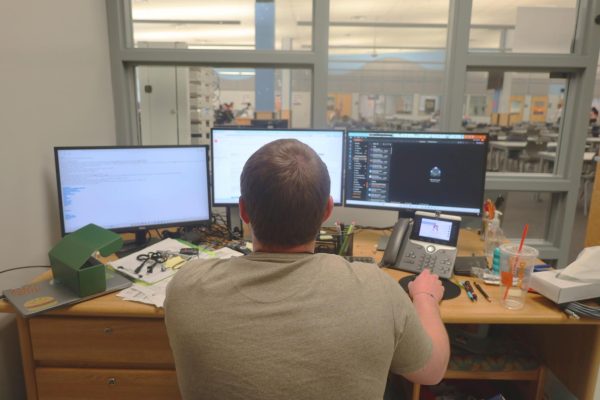Campaigning with COVID
photo by Laura Shaw
Yard signs for various political candidates in the Winter Springs area.
The moment a reality star billionaire got sworn in as President of the United States, the 2020 election was going to be a topic of interest for the next three years. The November elections are shaping up to be something voters have never seen before with challenges no one in the history of modern democracy has ever faced. Voters are struggling with mail-in and absentee ballots while candidates are battling Zoom events and fundraising calls, and that is on top of the most divisive political climate the country has seen in decades.
Politics is constantly changing, therefore the people immersed in it are forever adapting to newer and better ways of doing things. But this year the campaign process is dramatically different.
One of the fundamental changes is the increase in mail-in voting. Supervisor of Elections Chris Anderson told News 6 Orlando that there was a 10,000 vote by mail increase from the 2016 primary election, meaning that the November elections will break every mail-in voting record in history, and the questions and rhetoric surrounding this has been heated.
For many, all interactions with candidates could be completely online, flipping the entire campaign process on its head.
In-person fundraisers and door-to-door canvassing have transformed into Zoom events, and an emphasis on social media outreach, with the number of campaign-related phone calls increasing.
One of the most common problems in the political process right now is the inability to connect with a potential voter over the phone. Sharing personal anecdotes and relating to the community is a large part of the appeal for many politicians, especially in local elections.
“(It was)very difficult for me. I am very, very much of a people person when it comes to campaigns,” said Republican Lee Constantine, who is running for Seminole County Commissioner. “I like to shake hands, I like to pat people on the back.”
For people used to the old school methods like hosting dozens of small fundraisers at homes and going to community gatherings, family-owned restaurants or coffee shops, adapting to the more modern approach proved hard in the beginning, but they claim to be finding their feet in time for the general.
“Most of the time we contacted the individual citizen was through social media… using Facebook and the other media available to get the word out,” said Constantine. The ‘grass-roots’ campaigning of present day has adapted to include social media, zoom calls and fundraising only on a one-on-one phone call basis.
In an effort to overcome the necessary distance between candidates and voters, Democrat Pasha Baker for Florida House District 28 emphasized using all the resources she could.
“We used lots of different ideas and ways to campaign, more than we had ever before,” Baker said.
Republican David Smith, who will be facing Baker in November for District 28, has started to return to some in-person events, but says that a majority of them continue to be online.
“[With] COVID restrictions on gatherings, we haven’t done many in person events. We have been able to do them virtually with zoom and meetings,” said Smith.
Baker and Smith both said that their teams had some, but not a lot of struggle switching completely virtual due to the message of their campaigns staying the same.
“Seminole County is evolving, the United States is evolving, we are evolving. We have to adapt to that,” said Baker.
Smith has also paired his small in-person events with restarting door-to-door canvassing, but says it is “not going as good (as 2018),” and he is receiving less contact points than previous years.
No matter how it gets done, voter outreach is guaranteed to be completely different than before. Voter turnout and how people vote will be closely watched in November and the outcomes of all elections, national or local, using the more digital approach will be sure to impact how campaigns are run for years to come.
Your donation will support the student journalists of Hagerty High School. We are an ad-free publication, and your contribution helps us publish six issues of the BluePrint and cover our annual website hosting costs. Thank you so much!






